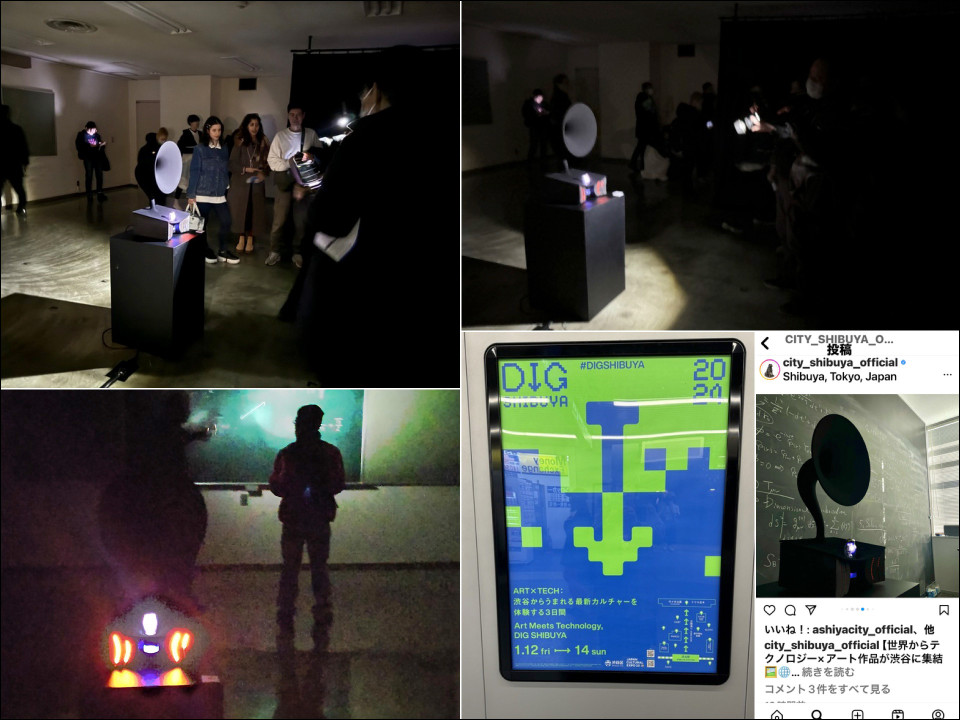Black Hole Recorder was exhibited at the art event DIG SHIBUYA from January 12th to 14th, 2024
iTHEMS exhibited "Black Hole Recorder”, a science art work based on quantum black hole theory created in 2021 with outside creators, as a program within the art event "DIG SHIBUYA” at the Shibuya Workers’ Welfare Hall for three days from January 12 (Fri.) to 14 (Sun.). The entire event was organized by the SHIBUYA CREATIVE TECH Executive Committee in cooperation with the Shibuya City, and "Black Hole Recorder” was selected as a collaborative project through an open call for proposals.
The exhibition was held in a dark room with the "Black Hole Recorder” set up in the middle of the room, and visitors were invited to enter with a flashlight to illuminate their feet and view the works with explanations. The entire venue was an experimental space, and the "Black Hole Recorder” constantly recorded all the sounds in the venue. For the first time, a booth was set up to allow visitors to listen to environmental sound data recorded from the very experimental space where the "Black Hole Recorder” was exhibited in the past, allowing them to enjoy the experience of listening to the past.
The exhibition was held at a facility located in the city of Shibuya, where many people (close to 300 in total) gather, and many visitors were able to view and experience the exhibition on a holiday day. Depending on the time of day, the venue was sometimes quite crowded. Through the artworks, many visitors became interested in black holes and their theories, and I believe that many of them left with an image of a black hole. Detailed explanations of the theory using a blackboard by researcher Yuki Yokokura and program director Tetsuo Hatsuda were also well received. The response was also positive due to the sense of time and scale regarding the plan to send recorded sounds to a black hole via radio waves in the future in order to deliver the sounds of humanity far into the future. Exhibiting at an art event in the city provided an opportunity to bring the results of our research to people who are not usually interested in science, and we felt that this was a good opportunity to make progress in the future.

